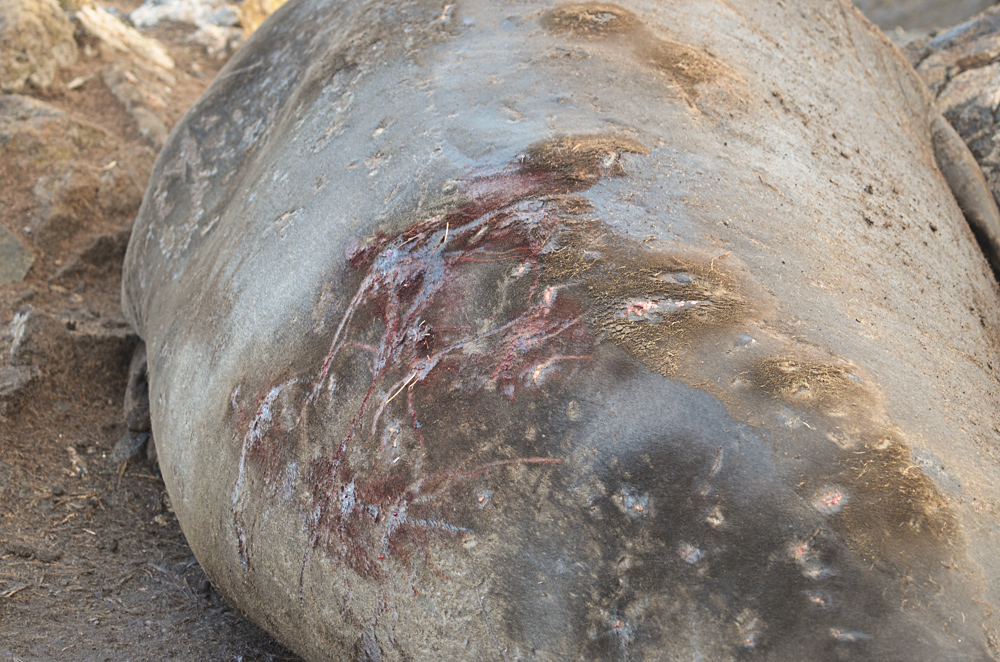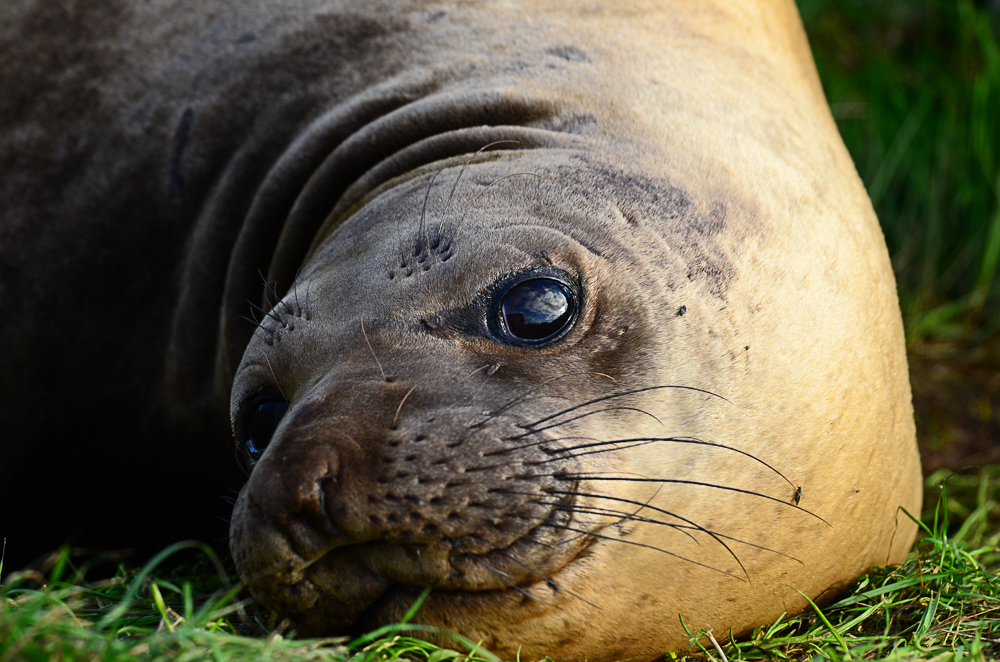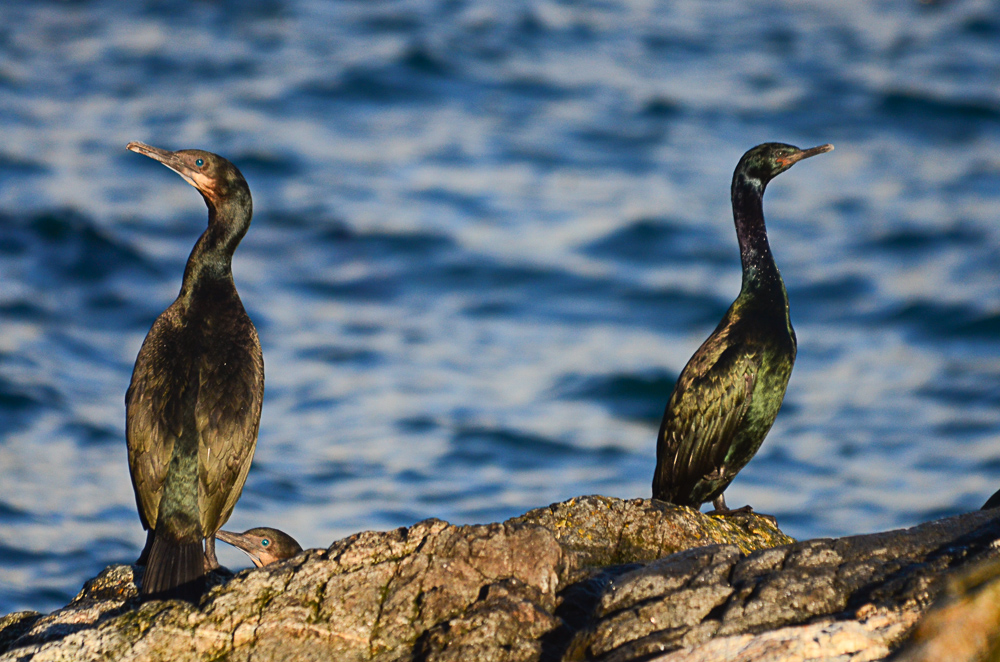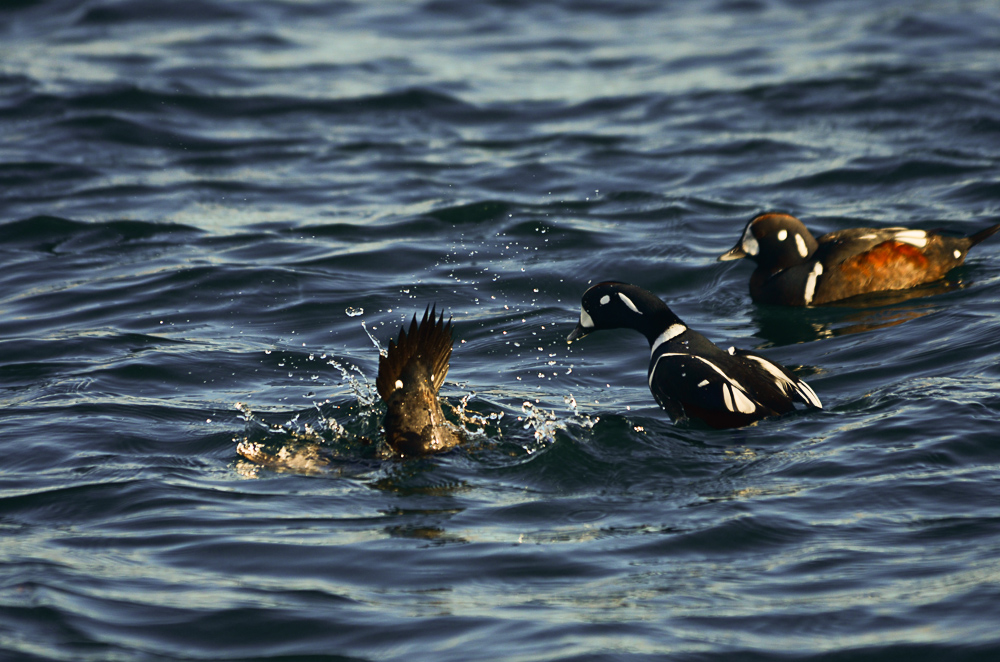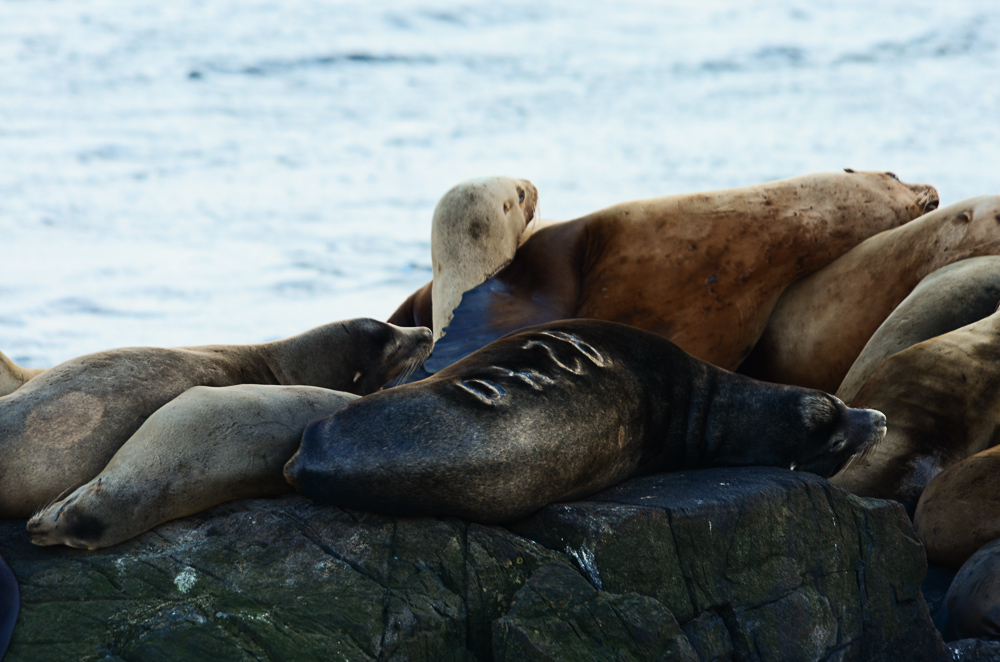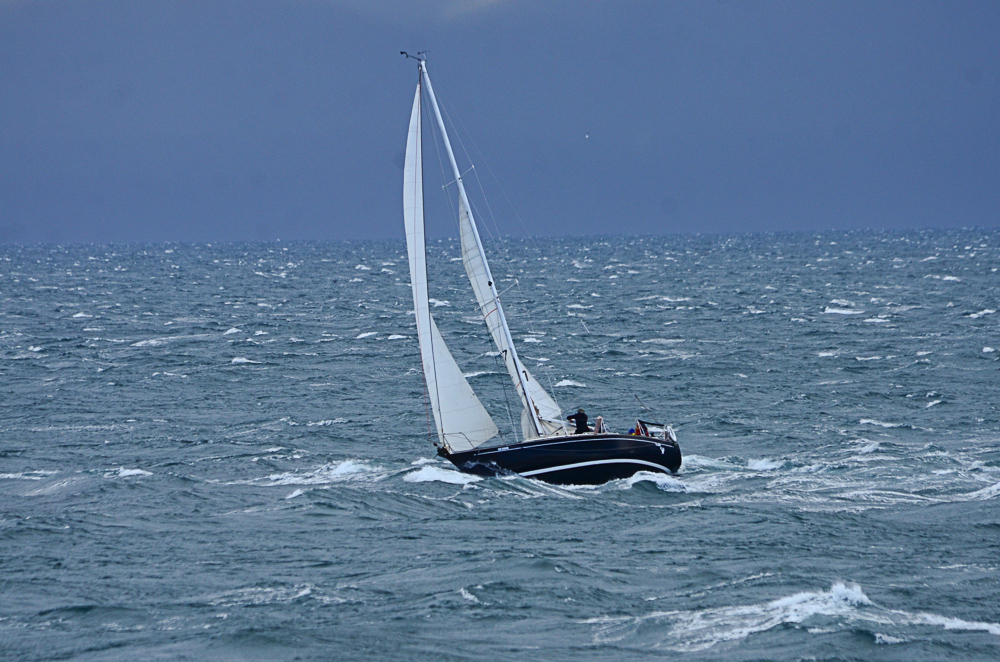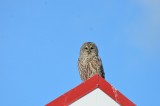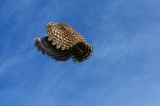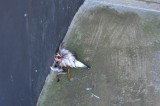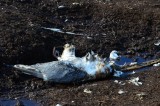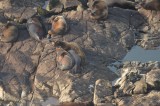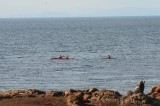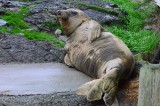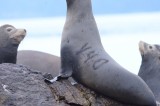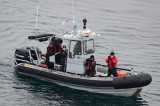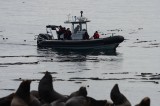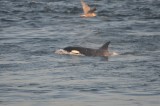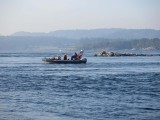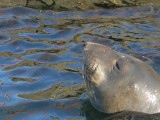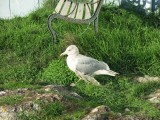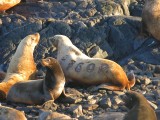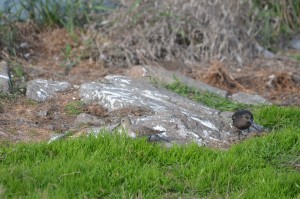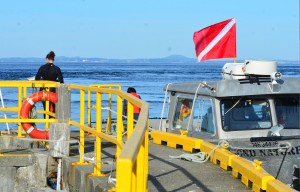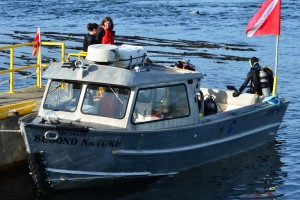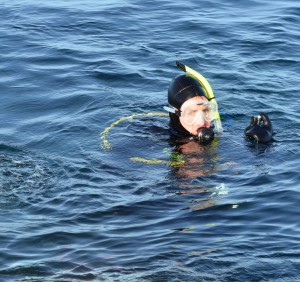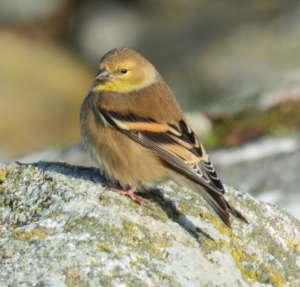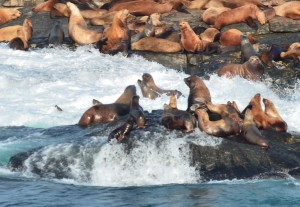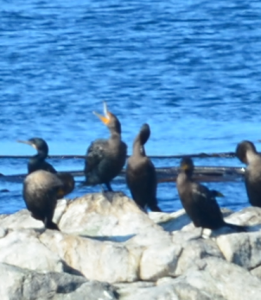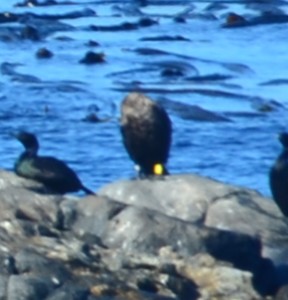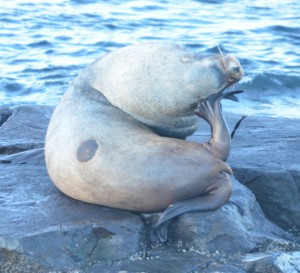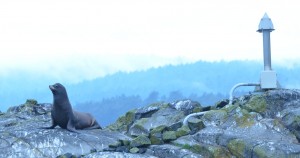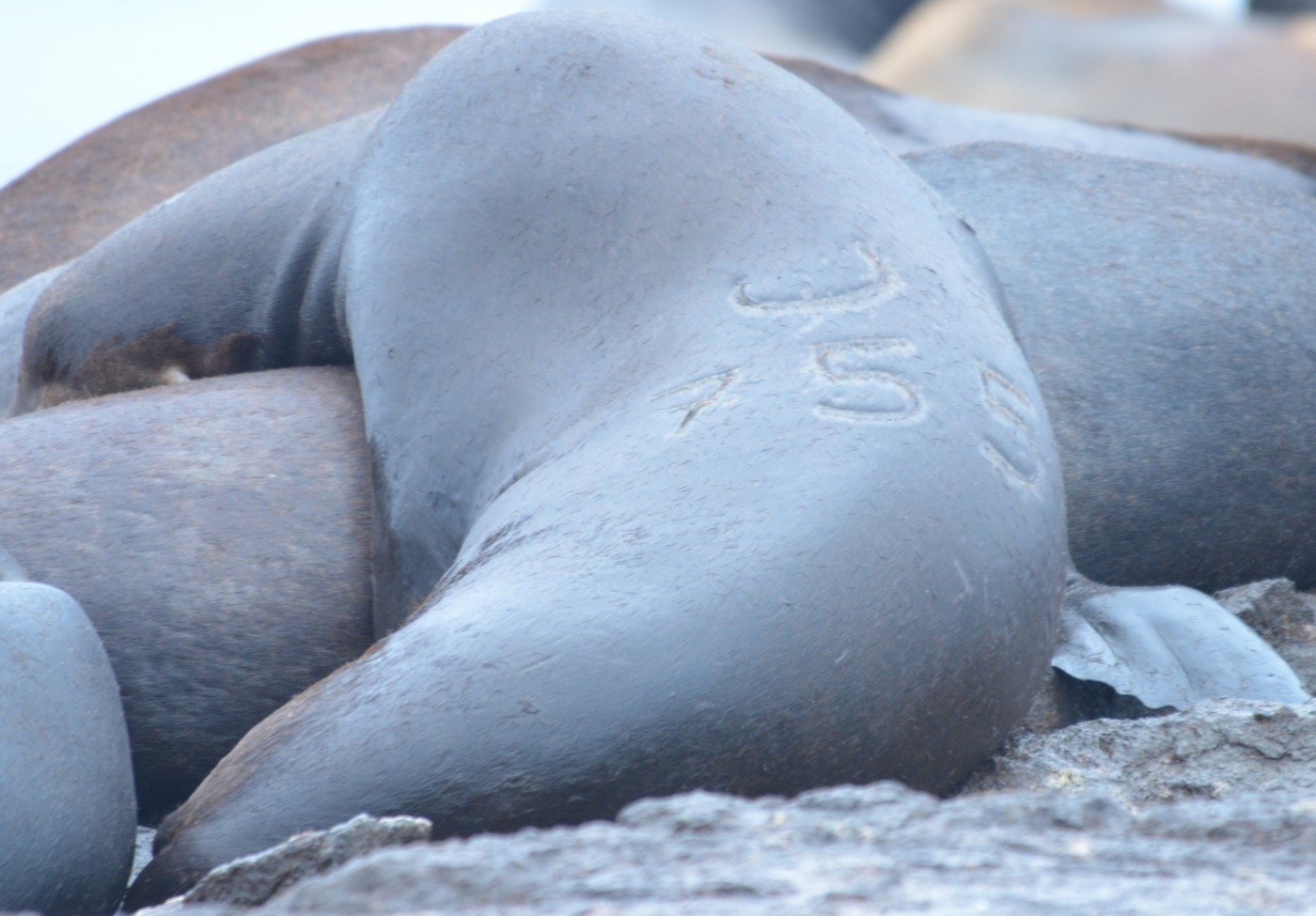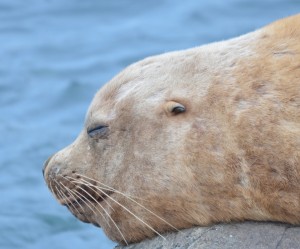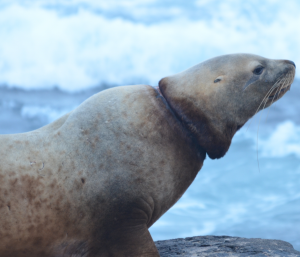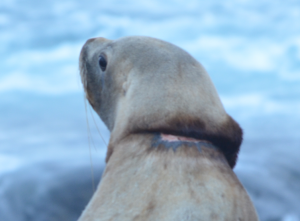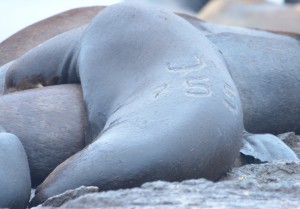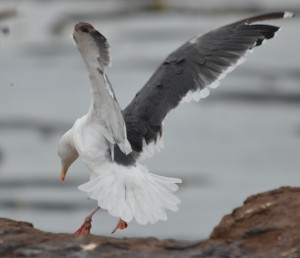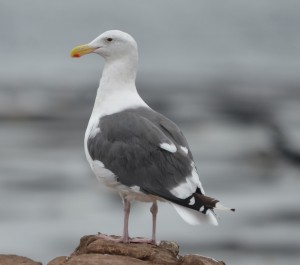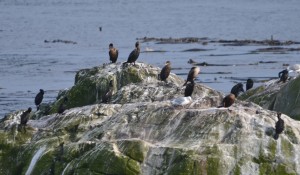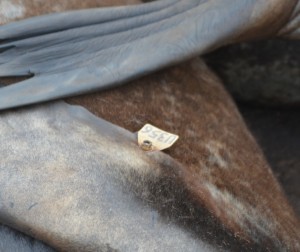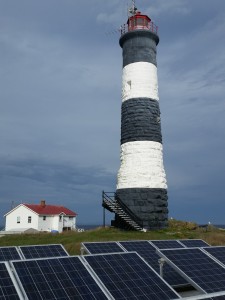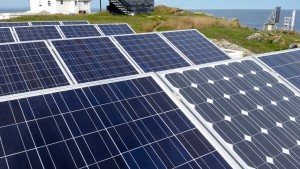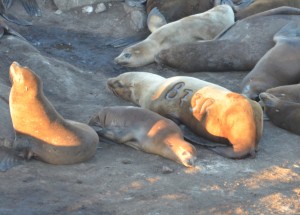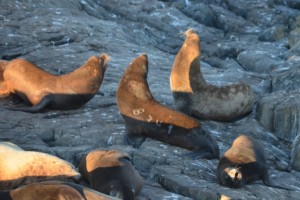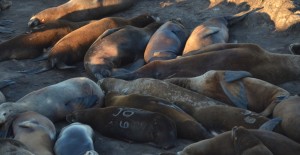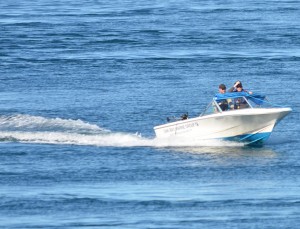Two more, lovely, sunny days squeezed in with the barometer down at ~ 1010 hPA and dropping. Light southeast wind today and yesterday will switch to variable and east on Thursday and the forecast looks like a change towards showers and southeasters towards the end of the week.
Ten visits by whale-watching vessels were observed in the Ecological Reserve each of the two days being reported. A handful of pleasure craft came through as well and everyone except the same guys who are always in a hurry and one boatful of lucky fishermen, were well behaved. The fishermen were lucky as they must have lost power and were swept over the little reef by Turbine Rock. One was ready with a paddle and the youngest one got the kicker going which got them out of there (eventually). That was exciting, especially for them. Eight kayaks came through the reserve yesterday. The paddlers at the front came through without disturbing any of the animals hauled out. The weakest paddler came by on her own, last. The tide pushed her a bit too close the Middle Rock and the sea lions stampeded. Sometimes it doesn’t take much.
Humpback Whales are feeding close if not in the reserve just about every day now. The individual spotted by the Marine Science students is feeding downstream just to the west of Middle Channel, during ebbing currents. I am curious if it goes down and just orients itself into the flow and filters away. There is a lot of food in the area and large multi-species feeding flocks driven by diving birds such as Common Murres and all three species of cormorants. The gulls, and there are a lot of them, roost on Race Rocks and then rush out to the feeding frenzies which I am assume are either small schooling fish like herring, sand lance or anchovies and/or large zooplankton like krill. These crustaceans are also known as Euphasiids and they look a bit like tiny shrimp with really big eyes. Those are the same sort of treats that Humpback whales like to feed on with their baleen and they use their really big fore flippers that are white on the underside, to herd krill and forage fish.
I have come to realize that the Glaucous-winged Gulls are still sitting around on the territories. Something I didn’t notice or understand last year until the spring shift and then I thought that they had just come back from somewhere. The juveniles that were raised here are mostly out foraging but also sometimes ‘hang-out’ where they were raised and also do a fait bit of begging from their parents. This week a lot of them have been practicing picking objects in their bills, flying with them and dropping them. Not sure if they are working on their aim but have noticed rocks, chunks of wood and bark and clumps of vegetation on the walkways. Yesterday morning I found a rock on the roof of the energy building and when I looked around saw the damage done to one of the solar panels.
Other birds seem a lot more refined. It is so nice to see the Harlequin Ducks back again, they are a favourite of mine. More and more Surf Scoters are flying through from west to east and it seems that fall is in the air.
-
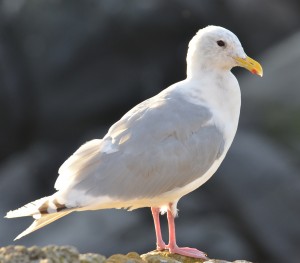
-
This Thayers Gull almost seems to have wings that are a bit long. (?)
-
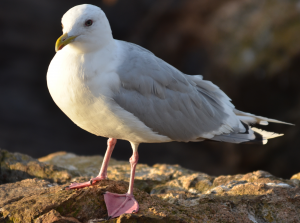
-
Thayer’s Gull conveniently holding still for a photo.
-
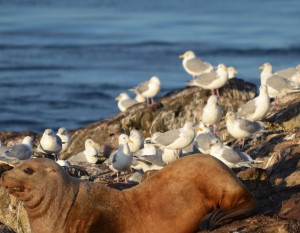
-
A mix of Thayers and Glaucous-winged gulls roosting near a Stellers Sea Lions.
-
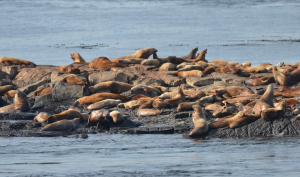
-
Stellers Sea Lions hauled out and tranquil on Middle Rock.
-
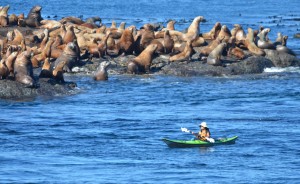
-
The ebbing tide is sweeping this kayaker a little too close to the Stellers Sea Lions.
-
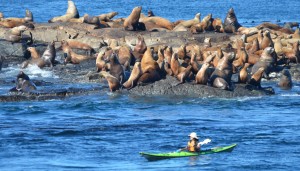
-
Once a few start to run, then it turns into a stampede.
-
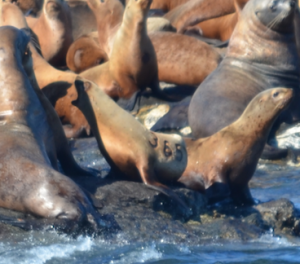
-
A partial brand is visible on the left side of this female Stellerss Sea lion in centre front. #365_
-
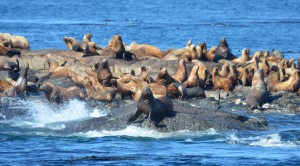
-
Mass pandemonium as everyone tries to get away from the little lady in the kayak.
-
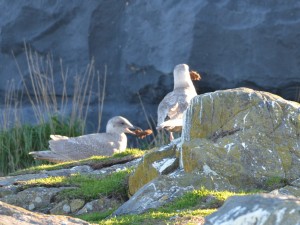
-
Gulls standing around practicing holding things in their bills.
-
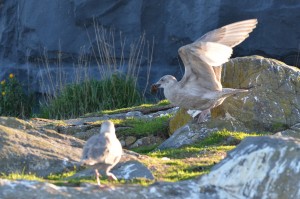
-
Succes flying while holding stuff.
-
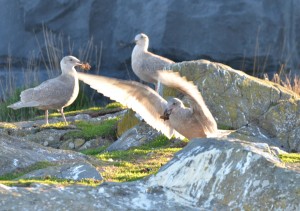
-
Time for take off while holding.
-
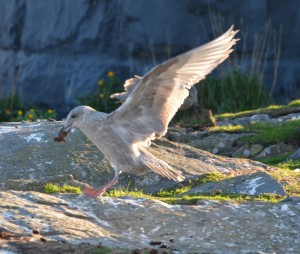
-
A smooth landing after what was possibly a first transport flight.
-
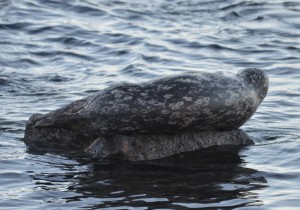
-
My question to Pam Birley: is this ‘Six spot’?
-
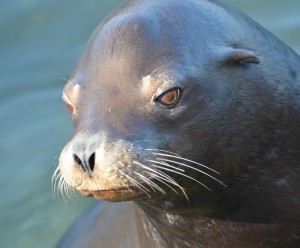
-
A very clean looking California Sea Lion.
Chores were routine both days and there were no visitors.

